294. Once again. The
framework for the Explorers stretched over
half a year and they reached Easter Island
in Te Maro 1 (*72), i.e. probably where Castor at
the time of Bharani had risen with the Sun
in "June 1 (152 = 80 + *72).
As if by coincidence the precessional
distance from the time of the calendar of
Gregory XIII and down to the time of Bharani
was around 37 right ascension days:
*41.4 * 26000 / 365¼ = ca 2947 years and *37
* 26000 / 365¼ = ca 2634 years.
With 2947 - 2634 = 313 = ca 314
→
π it would be natural to imagine AD 1582
(when the Pope launched his calenar) + 314 =
AD 1896 = AD 1842 (my assumed base line
year for rongorongo) + 54 years
(→ 54 weeks = 378 nights = the synodic cycle
of Saturn).
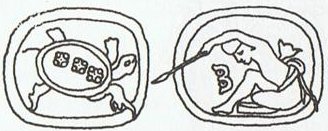
From
AD 1582 to AD 1842 there were 260 years and
from AD 1582 to AD 1896 there were 314
years.
Which in a way made their journey seemingly
instantaneous, because the place in the
night sky of "April
25 (115, *400) corresponded to that
of
°June 1 (152) which was 37 right
ascension days earlier than "June 1 (= Te
Maro 1):
|
°June 1 (152) |
36 |
°July 8 (189) |
135 |
°Nov 21 (325) |
9 |
°Dec 1 (335) |
|
Vaitu
Nui 25 (*35)
"April
25 (115, *400) |
Te Maro 1 (*72)
"June
1 (152) |
Tangaroa Uri 15 (*208)
"Oct 15 (288) |
Tangaroa Uri 25 (*217)
"Oct 25
(298) |
|
APRIL 2 (92) |
MAY 9 (129) |
SEPT
22 (EQUINOX) |
OCT 2 (275) |
 |
 |
 |
 |
|
(13) Ga1-12 |
(50) Ga2-19 (49) |
(186) Ga7-16 (370 / 2) |
(196) Ga7-26 (195) |
|
5h (*76.1) |
Castor (*113.4 = '41.4 + *72.0) |
Antares (*249.1) |
"April 26 (116, *401) |
|
183 (= 366 / 2) |
The royal double-canoe, on the other hand,
came in the night 177 (= *249 - *72) right
ascension days later, viz. where Antares had been
at the SEPTEMBER equinox. (And 177 = 354 / 2
= 6 * 29½, and 37 + 177 = 214 = 2 * 107, and
325 - 152 = 173 = 214 - 41 = 210 - 37.)
From Te Maro 1 to Tangaroa Uri 15
there were 288 (= 12 * 24) - 152 (= 8 * 19)
= 136 right ascension days and the Pope had
launched his 'crooked
canoe'
in °October 15 (288) - which though since
then would have been correctly aligned with the
stars by force of the precession:
... When the Pope Gregory XIII updated the
Julian calendar he did not revise what had
gone wrong before 325 AD (when the Council
of Nicaea was held). Thus the stars were
still 3-4 days 'out of tune' compared to the
calendar ... the Gregorian 'canoe' was
'crooked'. His calendar was not in perfect
alignment with the ancient star structure.
Because he had avoided to adjust with the
effects of the precession between the
creation of the Julian calendar and the
Council of Nicaea in 325 A.D. The Julian
equinox was in the 3rd month of the year and
in its 25th day (3-25) ...
... Taetagaloa [Not-Tagaroa] goes
right over there and steps forward to the
stern of the canoe saying - his words are
these: 'The canoe is crooked.' (kalo ki
ama). Instantly Likāvaka is
enraged at the words of the child.
Likāvaka says: 'Who the hell are you to
come and tell me that the canoe is crooked?'
Taetagaloa replies: 'Come and stand
over here and see that the canoe is
crooked.' Likāvaka goes over and
stands right at the place Taetagaloa
told him to at the stern of the canoe.
Looking forward, Taetagaloa is right,
the canoe is crooked. He slices through all
the lashings of the canoe to straighten the
timbers. He realigns the timbers. First he
must again position the supports, then place
the timbers correctly in them, but
Kuikava the son of Likāvaka goes
over and stands upon one support. His father
Likāvaka rushes right over and
strikes his son Kuikava with his
adze. Thus Kuikava dies.
Taetagaloa goes over at once and brings
the son of Likāvaka, Kuikava,
back to life. Then he again aligns the
supports correctly and helps Likāvaka
in building the canoe. Working working it is
finished
...
... When Julius Caesar established his
calendar in 45 BC he set March 25 (3-25)
as the spring equinox. Since a Julian year
(365.25 days) is slightly longer than an
actual year the calendar drifted with
respect to the equinox, such that the
equinox was occurring on about 21 March in
AD 300 and by AD 1500 it had reached 11
March. This drift induced Pope Gregory XIII
to create a modern Gregorian calendar. The
Pope wanted to restore the edicts concerning
the date of Easter of the Council of
Nicaea of AD 325
...
I.e.
there were 152 (= 8 * 19 = 84 + 68) days
from January 1 to June 1:
|
January |
31 |
31 |
|
February |
28 |
59 |
|
March |
31 |
90 |
|
April |
30 |
120 |
|
May |
31 |
151 |
|
June |
30 |
181 |
|
July |
31 |
212 |
|
August |
31 |
243 |
|
September |
30 |
273 |
|
October |
31 |
304 |
|
November |
30 |
334 |
|
December |
31 |
365 |
And 136 + 41 = 177 = 3 lunar synodic
'double-canoe' months.
If the creators of Manuscript E had read the
G tablet they could have been inspired from
the text on its side a to tell about the
time when Easter Island anciently had been
discovered by people coming from Hiva.
From the time of the Bull (Hyadum II) and up to the
time of Bharani there were *64 - *41 = *23
(= 184 / 8) right ascension precessional days. Therefore
Vaitu Nui 25 (*35) should be around
Ga1-12 (= *35 - *23):
... [E:17] On the twenty-fifth day of
the first month (Vaitu Nui),
Ira and Makoi set sail; on
the first day of June ('Maro'),
the bow of Ira's canoe appeared
on the distant horizon, came closer and
closer on its course, and sailed along,
and finally (one) could see the (new
home) land
...
The coefficient 41.4 for Bharani could
have been
used to arrange the pair of hanau
(birth)
glyphs
|
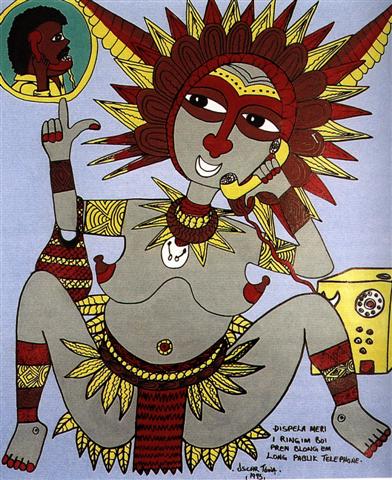
In A Girl
Rings her Boyfriend, a
woman who wears traditional
dress, including a fiber
apron and feather headdress,
uses a payphone to talk with
her boyfriend. Closer
examination reveals her
polished nails and a bag
that looks like a striped
bilum but is worn like a
Western-style handbag, signs
of her boldness that are
just as obvious as placing a
telephone call to a man. The
displayed posture in which
she sits, often used to
depict female ancestors as
images of fecundity and
prosperity, seems
incongrous, perhaps
underscoring Towa's
perception of the
inappropriateness of her
behavior. (The artist Oscar
Towa is from Papua New
Guinea and the quotation
from D'Alleva.) |
like a pair of legs (or a doorframe) around the waters
(μ) with Cursa at *35.0 and Capella at
*37.0:
|
APRIL 1 (91 = 364 / 4) |
2 (*12) |
3 |
4 (*14) |
 |
 |
 |
 |
|
Ga1-11 |
Ga1-12 |
Ga1-13 |
Ga1-14 |
|
HAEDUS II = η Aurigae
(75.9) |
5h (76.1)
ε Leporis (76.0),
CURSA = β Eridani (76.4),
λ Eridani (76.7) |
μ Aurigae, μ Leporis
(77.6) |
ĸ Leporis (78.0),
RIGEL (Foot) = β Orionis
(78.1),
Flaming Star = IC405
(78.2),
CAPELLA (Mother
Goat) = α Aurigae (78.4),
ο Columbae, τ Orionis (78.8)
THUBAN (α Draconis)
|
|
β,
2.9, topaz yellow. Cursa,
3º to the northwest of Rigel
in Orion, is the principal
star in this constellation,
seen from the latitude of
New York City. The word is
from Al Kursiyy al Jauzah,
the Chair, or Footstool, of
the Central One, i.e. Orion,
formed by β, λ, and ψ [which
evidently was omitted in my
star list] Eridani with
[Sic!] Orionis, and regarded
as the support of his left
foot; but in earlier
astronomy of the nomads it
was one of Al Udhā al
Na'ām, the Ostrich's
Nest, that some extended to
ο¹ and ο².
The Century Cyclopedia gives
Dhalim as an
alternative title,
undoubtably from Al
Thalīm, the Ostrich;
but, although used for β by
several writers, this better
belong to θ. The Chinese
called β Yuh Tsing,
the Golden Well. |
|
June 4 |
5 |
6 (157 = 314 / 2) |
7 (*78) |
|
°May 31 (151) |
°June 1 (*35 + *37) |
2 |
3 |
|
'May 8 (128) |
9 |
10 (*50) |
11 |
|
"April 24 (114) |
Te Vaitu Nui 25 (E:17)
25
(*76.4 - *41.4 = *35.0) |
26 (*36) |
27 (*78.4 - *41.4 = *37.0) |

... In view of the almost
universal prevalence of the
Pleiades year throughout the
Polynesian area it is
surprising to find that in
the South Island and certain
parts of the North Island of
New Zealand and in the
neighboring Chatham Islands,
the year began with the new
Moon after the early morning
rising, not of the Pleiades,
but of the star Rigel in
Orion
...
|
|
CLOSE TO THE FULL MOON: |
|
OCT 1 |
2 |
3 (*196 = *13 + *183) |
4 (277) |
|
17h (258.7)
ARRAKIS = μ Draconis
(258.7) |
Mula-19 (The Root)
SABIK (The Preceding One) =
η Ophiuchi
(259.7),
η Scorpii
(259.9) |
NODUS I = ζ Draconis
(260.0), π Herculis (260.7),
RAS ALGETHI (Head of the
Giant) = α Herculis
(260.8) |
SARIN = δ Herculis
(261.0),
ο Ophiuchi (261.4)
ALRISHA (α Piscium)
|
 |
|
Dec 4 |
5 |
6 (*260) |
7 |
|
°Nov 30 |
°Dec 1 |
2 (*256 = *260 - *4) |
3 |
|
'Nov 7 |
8 |
9 |
10 (314 = 300 + 14) |
|
"Oct 24 |
25 |
26 (*196 + *23) |
27 (*220 = *261.4 - *41.4) |
 |
There were 45 (= 360
/ 8) right
ascension days from the pair
μ
Aurigae and μ Leporis

until the Explorers
'made landfall' on
Easter Island:
|
35 |
MAY 10 (130) |
11 |
12 |
13 (*53) |
 |
 |
 |
 |
|
Ga2-20 (50) |
Ga2-21 |
Ga2-22 |
Ga2-23 |
|
ANA-TAHUA-VAHINE-O-TOA-TE-MANAVA-7
(Pillar for elocution)
υ Gemini (114.0),
MARKAB PUPPIS = κ Puppis
(114.7), ο Gemini (114.8),
PROCYON = α Canis Minoris
(114.9) |
α Monocerotis (115.4),
σ Gemini (115.7) |
Mash-mashu-arkū-11
(Eastern One of the Twins)
κ Gemini (116.1),
POLLUX = β Gemini
(116.2), π Gemini (116.9) |
AZMIDISKE = ξ Puppis (117.4) |
|
July 13 (*114) |
14 |
15 |
16 |
|
°July 9 |
10 |
11 (*112) |
12 (193) |
|
'June 16 |
17 (168) |
18 |
19 (*90) |
|
Te Maro 2 (*73) |
3 (*115.4 - *41.4) |
4 (*75) |
5 (*117.4 - *41.4) |
|
CLOSE TO THE FULL MOON: |
|
NOV 9 |
10 (314) |
11 |
12 (*236 = *472 / 2) |
|
ε Sagittae (297.1), σ
Aquilae (Ant.) (297.4),
SHAM (Arrow) = α Sagittae
(297.8) |
β Sagittae (298.0), χ
Aquilae (298.3), ψ Aquilae
(298.8) |
υ Aquilae (299.1),
TARAZED
(Starstriking Falcon) = γ Aquilae
(299.3), δ Sagittae (299.6),
π Aquilae (299.9) |
Sravana-23
(-)
TYL =
ε Draconis (300.0), ζ
Sagittae (300.1),
ALTAIR (Flying Eagle) = α Aquilae
(300.3), ο Aquilae (300.5),
BEZEK
= η Aquilae (Ant.)
(300.8) |
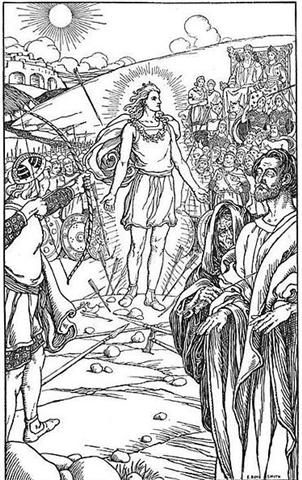 |
|
Jan
12 |
13 (378) |
14 |
15 (*300) |
|
°Jan
8 |
9 |
10 (*295) |
11 |
|
'Dec
16 (350) |
17 |
18 |
19 (*273) |
|
"Dec
2 (336) |
3 |
4 |
5 (*259) |
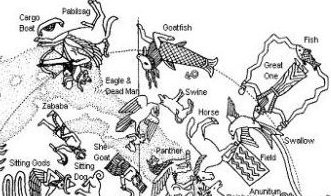 |
|
MAY 14 |
15 (365 + 135 = 500) |
16 (136 = 288 - 152) |
17 |
18 (*58 = *13 + *45) |
19 |
 |
 |
 |
 |
 |
 |
|
Ga2-24 |
Ga2-25 |
Ga2-26 |
Ga2-27 → π |
Ga2-28 (58) |
Ga2-29 |
|
Φ
Gemini (118.4) |
DRUS = χ Carinae
(119.9) |
ω Cancri (120.2) |
8h (121.7)
χ Gemini (121.0),
NAOS = ζ Puppis
(121.3) |
ρ Puppis
(122.0),
HEAP OF FUEL = μ Cancri
(122.1), ζ Monocerotis (122.3),
ψ Cancri
(122.6),
REGOR (the astronaut Roger
mirrored) = γ Velorum
(122.7) |
TEGMINE = ζ Cancri
(123.3) |
|
July 17 (*236 / 2) |
18 |
19 (200) |
20 (*121 = 11 * 11) |
21 |
22
/ 7 → π |
|
°July 13 |
14 |
15 (196) |
16 |
17 (*118 = *472 / 4) |
18 |
|
'June 20 |
SOLSTICE |
22 (173) |
23 |
ST JOHN'S DAY |
25 (*96) |
|
157 - 80 = *77 = *118.4 -
*41.4 |
"June
7 (158) |
8 |
9 |
Te Maro 10
Hanga Te Pau
ko te Tomonga (Landing Site)
o Ira. |
11 |
|
... Midsummer is the
flowering season of the oak,
which is the tree of
endurance and triumph, and
like the ash is said to
'court the lightning flash'.
Its roots are believed to
extend as deep underground
as its branches rise in the
air - Virgil mentions this -
which makes it emblematic of
a god whose law runs both in
Heaven and in the Underworld
... The month, which takes
its name from Juppiter the
oak-god, begins on June 10th
and ends of July 7th. Midway
comes St. John's Day, June
24th, the day on which the
oak-king was sacrificially
burned alive. The Celtic
year was divided into two
halves with the second half
beginning in July,
apparently after a seven-day
wake, or funeral feast, in
the oak-king's honour ... |
|
CLOSE TO THE FULL MOON: |
|
NOV 13 |
14 |
15 |
16 (*240) |
17 |
18 (322) |
|
ι Sagittarii (301.2),
TEREBELLUM = ω Sagittarii,
ξ Aquilae (301.3),
ALSHAIN = β Aquilae
(301.6), φ Aquilae (301.8) |
ε Pavonis, θ Sagittarii
(302.3), γ Sagittae (302.5),
μ Pavonis (302.7) |
τ Aquilae (303.8) |
20h (304.4)
η Sagittae (304.2), δ
Pavonis (304.4) |
SHANG WEI (Higher Guard) = κ
Cephei (305.2), θ
Sagittae (305.4),
TSEEN FOO (Heavenly Raft) =
θ Aquilae (Ant.)
(305.6), ξ Capricorni
(305.8) |
TSO
KE (Left Flag) = ρ Aquilae
(306.3) |
|
Jan 16 |
17 |
18 (383) |
19 |
20 |
21 |
|
°Jan 12 |
13 (378) |
14 |
15 (*300) |
16 |
17 |
|
'Dec 20 (354) |
SOLSTICE |
22 |
23 |
CHRISTMAS EVE |
25 (*279) |
|
"Dec 6 (340)
|
7 |
8 |
9 (7 * 7 * 7) |
10 (*264) |
11 |
.jpg)
|



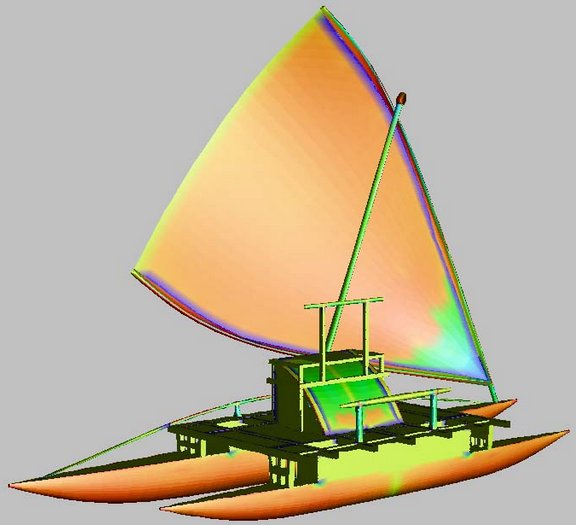












.jpg)